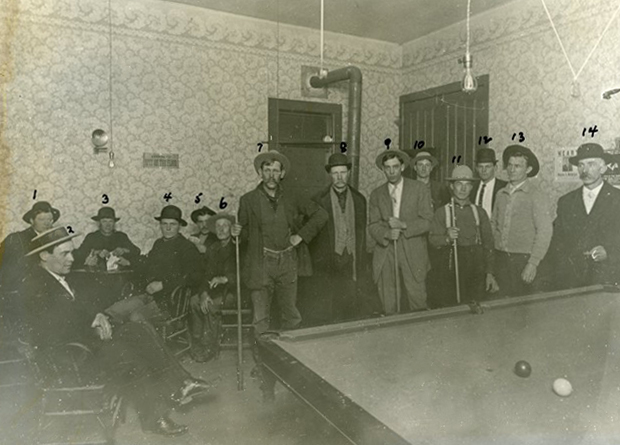This is the second segment in a series of articles about the libraries in Mendocino. The previous column took us from 1883, when the first library opened in the Good Templars’ Hall on south Main Street, to 1909. That year the county went “dry” and the libraries sponsored by these temperance organizations had completed their mission.

With saloons closed and men in need of more wholesome diversions, the businessmen of the town formed a new civic-minded group called the Good Government League. They joined forces in 1909 with the recently created Mendocino Library Association on a project to improve the community with a Recreation Center.
Their location was the “old temperance hall” (later called Kellieowen Hall) on the corner of Lansing and Ukiah streets. The reading room would relocate from its store building on Main Street near the Kelley Pond to a large, renovated room on the hall’s south side, once used as a restaurant and dwelling.
With this move, the library went from being a quiet room for reading magazines and checking sports scores, to being one element in a feature-rich amusement hall that also offered a billiards room, a gymnasium, and a confectionery and refreshment stand to help fund the place.
The large corner building it came to occupy had been constructed back in 1887 by William H. Kelley as a skating rink and dance hall. So, it was fitting that the League should revive this earlier use, announcing in its first year that a new skating rink would now be open in the evenings. Joe Nichols oversaw all this fun, and he promised that “good order will be maintained, and no objectionable characters allowed on the floor.”
You’ll be glad to know that the reading room was not forgotten in this new endeavor. They hired a librarian named Paul Schultz, “an industrious young man of steady habits,” who kept it tidy and open every day with both day and evening hours.
To build up the anemic library department, Elise Drexler, W. H. Kelley’s wealthy daughter, donated 35 books in 1910, including volumes on history, biography, astronomy, three by Emerson, others by Dickens, Burroughs, Sewall, Hawthorne, Coffin, Bolton, Morris, Harrison, two volumes of encyclopedias and a dictionary stand. She sent more volumes the following year, mostly fiction.
Her older sister, Daisy MacCallum, lived a short way down Ukiah Street from the hall. Daisy managed the Kelley family’s Mendocino real estate interests, including this building. For her contribution to the recreation center, she employed Fred Smith to lay concrete sidewalks around its north and east sides, all the way from her recently enlarged home to the west, down Ukiah, around the corner, and then south on Lansing to Albion Street.
By 1911, motion pictures were being shown on Saturday nights at the Mendocino rec center. This continued until at least 1919 when competition arrived with the Liberty Theater and its own shows a block south at Main and Lansing Streets.
Despite initially strong financial support from private individuals and the Mendocino Lumber Company, in 1916 Trustee John S. Ross had to publish an appeal for money and donations of old books and magazines so that the reading room could remain open.
The gymnasium continued as a hub of youth-oriented activities through the 1920s, hosting high school basketball and baseball games, as well as numerous parties and social events. A young men’s athletic club was formed in 1923.
As for the library, there is little mention of its use during the 20s, except by a gospel group, led by Roland H. Smith, that held its weekly “Reading Room Sunday School” there for a few months in 1922 before moving across the street into their new Gospel Hall (the future Sea Gull restaurant).
But in 1931, Girl Scout Troop #1 came to the library’s rescue. We’ll find out how in the next column.